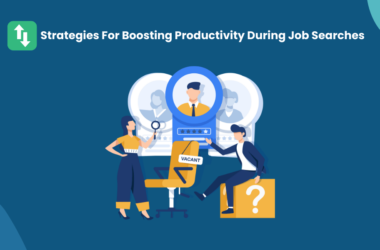Table of Contents Show
Businesses are continually seeking innovative approaches to enhance performance and achieve sustainable success. In this quest, Gross Primary Productivity (GPP) emerges as a compelling metric that transcends traditional boundaries and offers a fresh perspective on organizational dynamics.
Beyond its ecological origins, GPP becomes a powerful lens through which companies can gauge and optimize their internal processes, resource utilization, and overall efficiency.
What is Gross Primary Productivity?
Gross Primary Productivity (GPP), at its core, is the cusp of generated output before any deductions. It is a raw measure, reflecting the total volume of work produced within a given period.
Gross Primary Productivity (GPP) targets the totality of work output, unifying team efforts, individual contributions, and efficiency of processes. It’s crucial for optimizing business strategies and overall performance.
This concept extends beyond mere numbers. It encapsulates the cumulative efforts of teams, individual contributions, and the efficiency of processes, painting a complete picture of business productivity.
Thus, Gross Primary Productivity is not merely a business metric. It’s a window into the inner workings of an organization, providing insights to fine-tune strategies, streamline workflows, and augment overall performance.
Why is Gross Primary Productivity important for business success?
Let’s link Gross Primary Productivity and business prominence. Every task performed by resources in your organization impacts your business, and adorningly, total productivity. An increase in productivity implies more output is generated, often leading to higher business profitability and prominence.
Gross Primary Productivity holds immense significance in the corporate world. A productive business not only accomplishes tasks efficiently but also allocates resources judiciously. This facilitates an environment where everyone is contributing to the maximum of their potential, thereby enhancing the competitiveness of the organization.
Consider productivity as the heart of any business. It pumps in efficiency, accelerates growth, and circulates prosperity. Fostering a culture of productivity is an investment that yields immense dividends for the business – greater engagement, enhanced morale, and of course, elevated profits.
Factors Affecting Gross Primary Productivity
Diving into the factors impacting Gross Primary Productivity, it becomes clear that elements like employee skills and knowledge, efficient work processes, and effective communication play pivotal roles. Each of these elements either propels or restricts productivity, thereby affecting the business’s bottom line.
Major barriers to productivity growth often sit within the realms of inadequate employee training, lack of streamlined workflows, and poor communication structures. These stumbling blocks, when left unaddressed, can curb the potential for Gross Primary Productivity growth, depriving businesses of much-needed efficiencies.
1. Employee Skills and Knowledge
There’s an undeniable link between the expertise of your workforce and Gross Primary Productivity. With well-honed technical and soft skills, employees drive operational efficiencies, enhancing productivity that ultimately increases your bottom line.
Every entrepreneurial venture should understand that Gross Primary Productivity is impacted significantly by employee skills. The more adept the employees are in their respective roles, the more value they bring to the table, contributing to overall business productivity.
2. Efficient Work Processes
Delving into practical measures, businesses should scrutinize and reassess their existing processes regularly. This allows them to identify bottlenecks, thereby refining and optimizing workflows to enhance efficiency. Technology, such as AI and machine learning, can be leveraged to automate routine tasks and boost productivity.
Efficient work processes play a pivotal role in augmenting Gross Primary Productivity. When systems run smoothly and tasks are streamlined, employees can accomplish more in less time. This not only minimizes waste but also magnifies the overall output.
Moreover, efficient processes ensure resources are used judiciously. By reducing unnecessary steps and redundancies, businesses can focus more on their core operations, thereby fuelling Gross Primary Productivity and driving profitability.
3. Effective Communication and Collaboration
Bolstering gross primary productivity hinges on effective communication. A dynamic communicative environment forges stronger interpersonal ties, dissolving barriers and enabling fast, informed decision-making.
Fostering collaboration is the secret sauce to heightened productivity. A culture centered around teamwork and mutual respect can stimulate innovative ideas, fine-tune strategies, and facilitate efficient execution, turbo-boosting productivity.
Strategies to Improve Gross Primary Productivity
Seizing proven strategies, like training and development programs, automation, and advanced communication tools lays the foundation for amplified gross primary productivity. When they’re executed systematically, they can skyrocket the overall output and efficiency of your business.
Taking an idea from the conceptual phase to execution is a strategic process offering significant gross primary productivity boosts. The keys include aligning employee skills with work demands, streamlining processes, and fostering strong communication within all echelons of the business.
1. Investing in Employee Training and Development
Catalyzing Gross Primary Productivity necessitates a robust approach to employee training. This positions the workforce to effectively translate their skills into value creation, impacting productivity positively.
Without employee skill development, potential productivity remains locked. Quality training programs unleash this potential, enabling capacity expansion and fostering a culture of continuous improvement.
A mutually reinforcing relationship exists between better productivity and skill development. Enhanced skills lead to improved performance and vice versa, creating a virtuous circle of growth and development in businesses.
2. Streamlining and Automating Workflows
For an exponential increase in Gross Primary Productivity, harnessing the power of automation is a game-changer. Not only does streamlining your workflows clear the clutter, but it also immeasurably enhances your business efficiency.
- Identifying repetitive tasks and employing automation tools.
- Reducing manual errors and increasing accuracy with automated systems.
- Leveraging AI-powered software for task optimization.
- Using project management tools for an integrated, streamlined workflow.
- Integrating systems and processes for smooth interdepartmental work transfer.
- Investing in software for automatic data analysis, saving time on manual computations.
3. Implementing Tools for Communication and Collaboration
To catapult the Gross Primary Productivity in your business, consider implementing an arsenal of communication and collaboration tools. This move not only fosters a thriving communication-centric culture, it also sends the efficiency and effectiveness of your team’s output through the roof.
- Incorporate digital tools like project management software to streamline team tasks and beat deadlines
- Introduce instant messaging platforms to hasten communication and avoid misunderstandings
- Utilize video conferencing tools to bridge geographical gaps and maintain face-to-face interactions
- Adopt cloud-based technologies to allow team members to access shared resources, anytime and anywhere
- Integrate workflow automation tools to eliminate repetitive tasks and focus on more critical business operations
Measuring and Tracking Gross Primary Productivity
To ensure business growth, design effective metrics that evaluate the Gross Primary Productivity in a comprehensive yet crisp manner. Quality indicators like work quality, task completion timeline, and overall output can offer valuable insights into productivity maximization.
Leveraging cutting-edge technologies, like time-tracking software and project management tools, provides real-time visibility of productivity metrics. This aids in quick action for boosting performance, thus directly contributing to Gross Primary Productivity.
Key Performance Indicators (KPIs) to Monitor
By harnessing the power of integrated KPIs, you can navigate your Gross Primary Productivity journey better. These metric-related roadmaps are the catalysts that fuel productivity increases.
Maximizing productivity without observing KPIs might prove futile. These tiny yet powerful indicators hold a mirror to your performance, enabling you to tweak strategies and hit Gross Primary Productivity targets swiftly.
Conclusion
Understanding and harnessing gross primary productivity is essential for managers and entrepreneurs who strive for success. By focusing on productivity and finding ways to optimize it, businesses can thrive and achieve their goals.
More articles:










